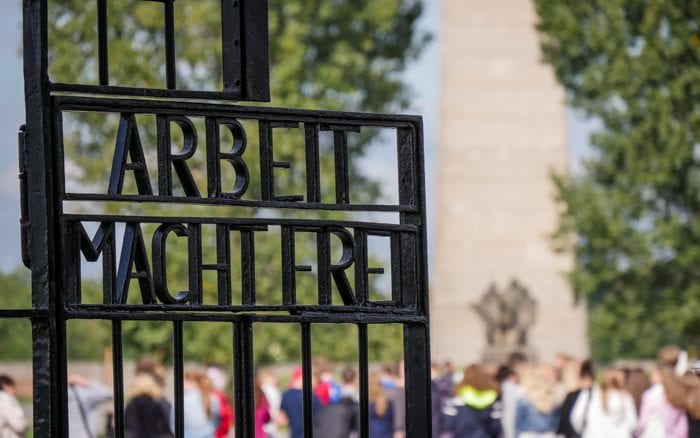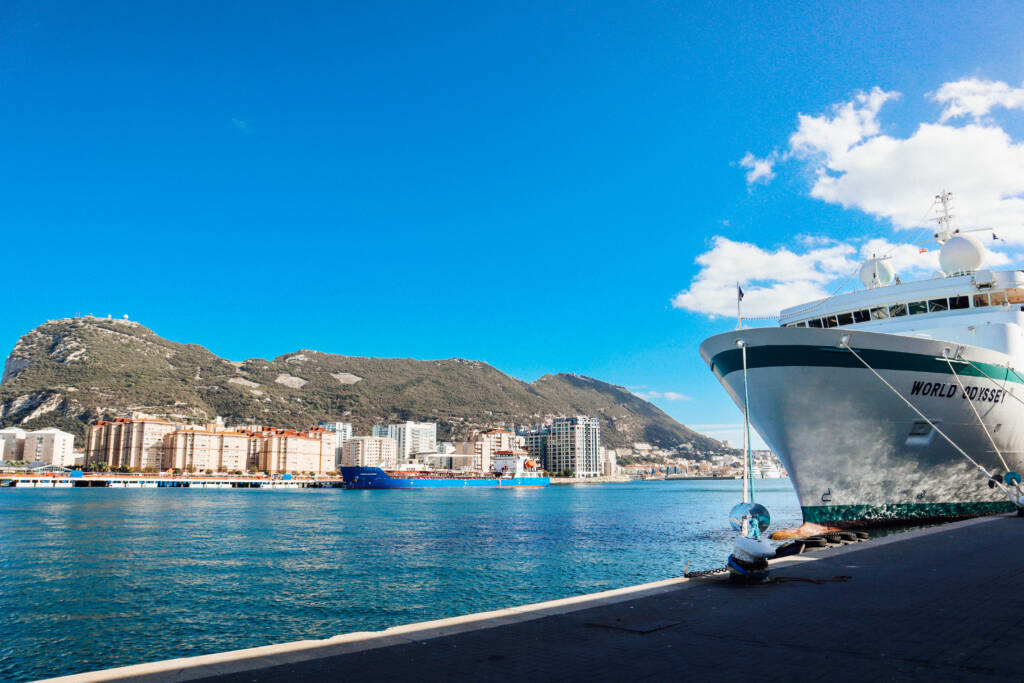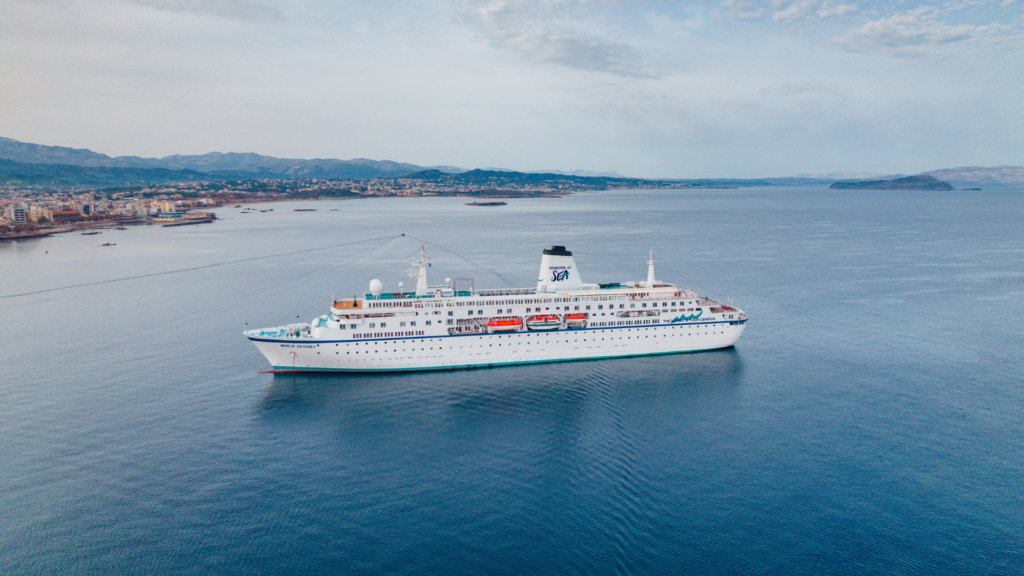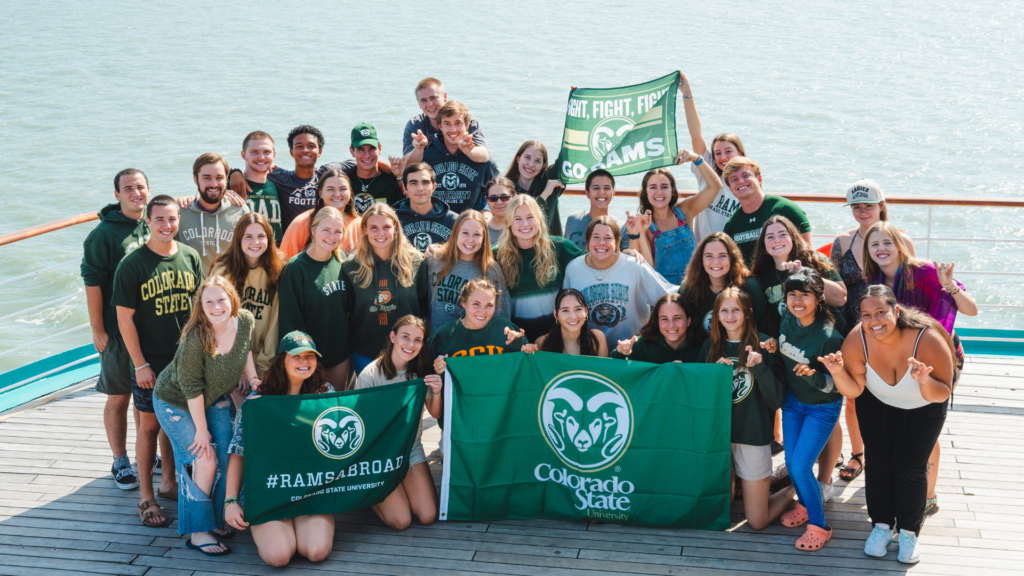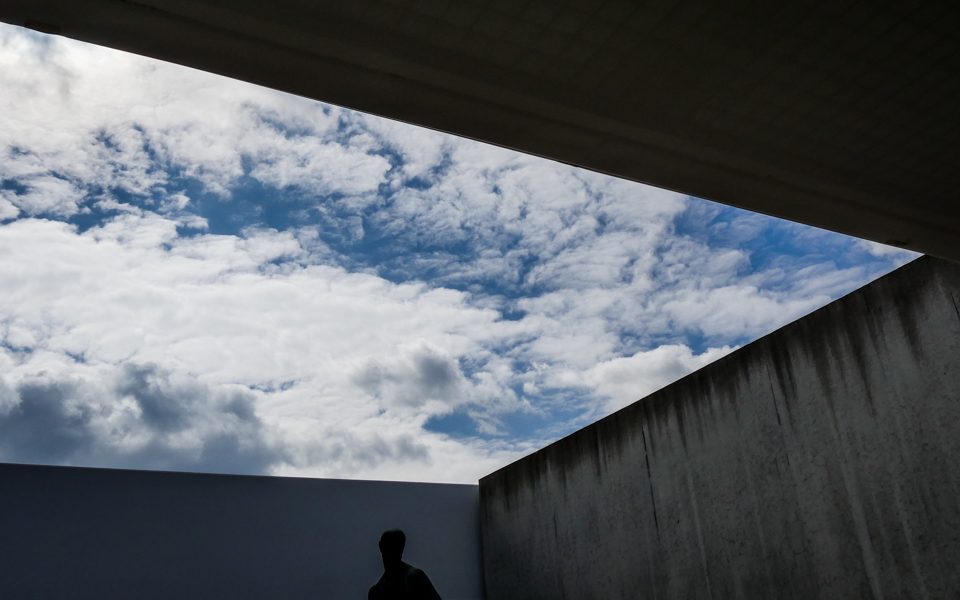
“You lost your clothes. You lost your identity. You lost everything here,” said German guide Silvia H√∂hne, as she stood at the entrance to the Sachsenhausen Concentration Camp in Oranienburg, Germany.
Eerie. Hollow. Sad. A cool breeze whipped through this solemn ground as if it were planned, building on its somber feel. Visiting a concentration camp was not just a routine tourist destination; it was a trip back to a troubled history that continued to haunt these grounds almost 70 years later. Fall 2014 voyagers at the camp were in search of a connection to the past and a clearer understanding of what exactly happened at this site. But often the answers students searched for were difficult to stomach.
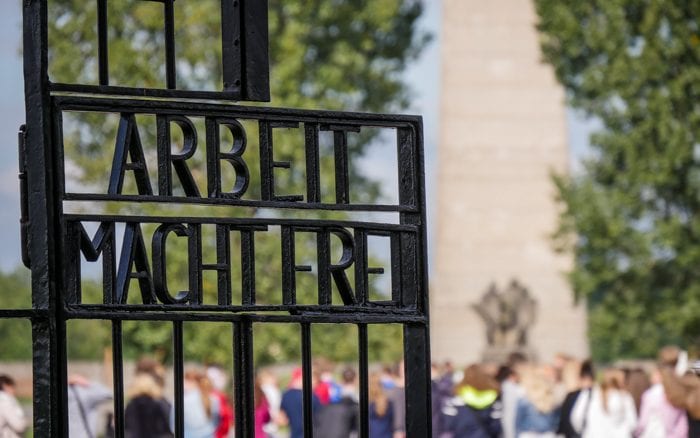
Pushing passed a gate that read “Arbeit Macht Fret”, translated to “work makes you free”, the irony hung in the air as they entered the facility that more than 200,000 people were forced to work. On these desolate grounds there were no freedoms, no privacy, and no basic human rights.
Sachsenhausen Concentration Camp was originally designed as a work camp, different from the many death camps spread throughout Europe. Nazi officials worked the captured people to the bone, often without breaks for food or use of restrooms. They tested shoes, maintained nearby SS houses, and even assisted at the infamous “Station Z” helping to dispose of bodies following exterminations. “You can’t actually prepare for (the visit)‚ĶIt was very intense, but I’m glad I did it,” said student Jennifer Murphy, Rocky Mountain College.
As they walked through the barracks and washrooms viewing conditions decades earlier, a pit of sadness could not be ignored. Students struggled to find the right words to express their feelings in the space. For many, placing themselves in the shoes of the imprisoned people was an unfathomable pain. “(In the barracks) there were so many beds so close together. And then the guide told us there were three people on each bed. I couldn’t believe it,” said Terra Barton, University of Miami.
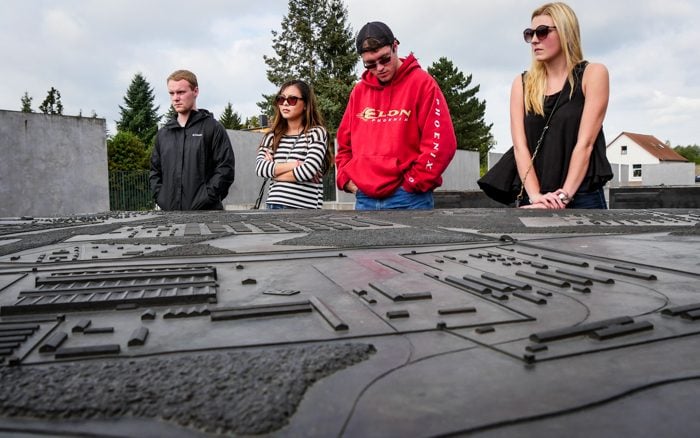
Students paid homage to all the individuals who walked these grounds ‚Äì not just the interned Jewish people but also Soviet prisoners of war, Communists, homosexuals, Jehovah’s Witnesses, political activists, and criminals. More widespread than the students realized, discrimination did not focus on one race or religious group at Sachsenhausen. These hate crimes spanned numerous demographics and targeted all who were outside the Nazi party. “Being in the United States, we don’t really have this kind of a (WWII) history. In Germany and Poland it happened here. It made it real,” said student Kristen Forti, Towson University.
Along the way, the local guide was equally moved by the experience, even though she had visited countless times before. Tracing both Nazi and Jewish bloodlines in her family, it was a struggle for her to make sense of it all. At moments she seemed saddened and at other times angry as she walked us through the grounds. Having been born after the end of WWII, she explained the confusion and guilt the Nazi’s tainted past had left her with. H√∂hne added, “At some point you have to move on. I did not do this. I was not even alive. It is hard to move past the guilt you are born with.”
Photos by: Joshua Gates Weisberg
